Journal article
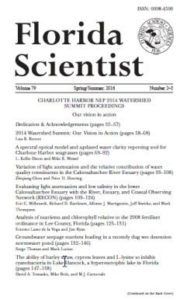
Hydroecological Monitoring of Benthic Invertebrate Communities of Marsh Habitat in the Upper and Middle St. Johns River
Abstract
Monitoring of benthic invertebrate communities in aquatic ecosystems has been used to evaluate a variety of environmental effects, including changes in hydrology. As part of a hydroecological assessment of the St. Johns River, FL, we studied invertebrate communities of shoreline and floodplain marsh habitats at locations in the middle and upper St. Johns River. A total of 112 invertebrate taxa were identified. Most were aquatic insects in the orders Odonata, Hemiptera, Coleoptera and Diptera. We examined a variety of metrics of invertebrate community structure and a surrogate measure of ecosystem function. Some of these metrics displayed patterns that could be related to hydrology. Preliminary sampling in floodplain marsh habitats with varying duration of inundation suggested some hydroecological patterns; relative abundance of taxa indicative of more permanent aquatic habitats (Ephemeroptera and Amphipoda) had a positive relationship with duration of inundation. Taxa able to undergo diapause during dry periods (Oligochaeta), those able to disperse to new habitats (Diptera, Coleoptera), and those with short life cycles adapted to temporary habitats (Diptera) had negative relationships between relative abundance and duration of inundation. We propose three new metrics that may be useful for future monitoring.
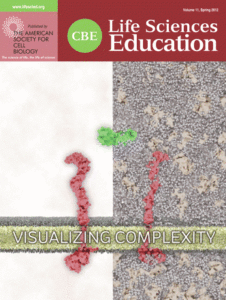
Exploring Undergraduates’ Understanding of Photosynthesis Using Diagnostic Question Clusters
Abstract
We present a diagnostic question cluster (DQC) that assesses undergraduates’ thinking about photosynthesis. This assessment tool is not designed to identify individual misconceptions. Rather, it is focused on students’ abilities to apply basic concepts about photosynthesis by reasoning with a coordinated set of practices based on a few scientific principles: conservation of matter, conservation of energy, and the hierarchical nature of biological systems. Data on students’ responses to the cluster items and uses of some of the questions in multiple-choice, multiple-true/false, and essay formats are compared. A cross-over study indicates that the multiple-true/false format shows promise as a machine-gradable format that identifies students who have a mixture of accurate and inaccurate ideas. In addition, interviews with students about their choices on three multiple-choice questions reveal the fragility of students’ understanding. Collectively, the data show that many undergraduates lack both a basic understanding of the role of photosynthesis in plant metabolism and the ability to reason with scientific principles when learning new content. Implications for instruction are discussed.
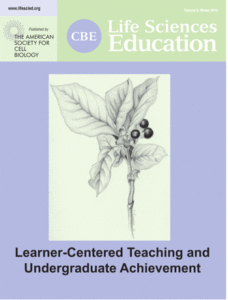
The Development of a Conceptual Framework and Tools to Assess Undergraduates’ Principled Use of Models in Cellular Biology
Abstract
Recent science education reform has been marked by a shift away from a focus on facts toward deep, rich, conceptual understanding. This requires assessment that also focuses on conceptual understanding rather than recall of facts. This study outlines our development of a new assessment framework and tool—a taxonomy— which, unlike existing frameworks and tools, is grounded firmly in a framework that considers the critical role that models play in science. It also provides instructors a resource for assessing students’ ability to reason about models that are central to the organization of key scientific concepts. We describe preliminary data arising from the application of our tool to exam questions used by instructors of a large-enrollment cell and molecular biology course over a 5-yr period during which time our framework and the assessment tool were increasingly used. Students were increasingly able to describe and manipulate models of the processes and systems being studied in this course as measured by assessment items. However, their ability to apply these models in new contexts did not improve. Finally, we discuss the implications of our results and the future directions for our research.
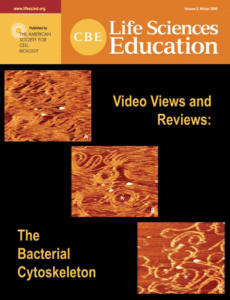
Assessing Students’ Ability to Trace Matter in Dynamic Systems in Cell Biology
Abstract
College-level biology courses contain many complex processes that are often taught and learned as detailed narratives. These processes can be better understood by perceiving them as dynamic systems that are governed by common fundamental principles. Conservation of matter is such a principle, and thus tracing matter is an essential step in learning to reason about biological processes. We present here multiple-choice questions that measure students’ ability and inclination to trace matter through photosynthesis and cellular respiration. Data associated with each question come from students in a large undergraduate biology course that was undergoing a shift in instructional strategy toward making fundamental principles (such as tracing matter) a central theme. We also present findings from interviews with students in the course. Our data indicate that 1) many students are not using tracing matter as a tool to reason about biological processes, 2) students have particular difficulties tracing matter between systems and have a persistent tendency to interconvert matter and energy, and 3) instructional changes seem to be effective in promoting application of the tracing matter principle. Using these items as diagnostic tools allows instructors to be proactive in addressing students’ misconceptions and ineffective reasoning.
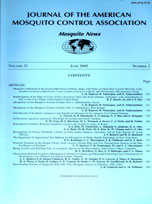
Effects of Bacillus Sphaericus (Vectolex®) on Nontarget Organisms in a Mosquito Control Program in Southeastern Wisconsin: A 3-Year Study
Abstract
A 3-year study (2000–2002) in southeastern Wisconsin was conducted to assess the effects of Bacillus sphaericus applied for mosquito control on nontarget wetland invertebrates. The experimental design consisted of control and treatment sites (that were applied by helicopter with Vectolex® CG), each in 2 vegetation habitat types: reed canary grass marsh (Phalaris arundinacea) and cattail marsh (Typha spp.). In each of these areas, a predetermined number of timed (30-sec) D-frame aquatic net samples containing vegetation, detritus, and invertebrates were collected 1 day before spraying and 72 h after spraying to detect for effects. We examined and compared 5 bioassessment measures to determine if there was an effect of B. sphaericus on nontarget organisms during each of the sampling years. The metrics tested were 1) mean taxa richness (the mean number of all taxa), 2) mean diversity (combines taxa richness and abundances in a summary statistic; i.e., Shannon Index [H′]), 3) Diptera richness (minus mosquitoes) as a proportion of all other taxa richness (Diptera/others richness), 4) Diptera abundance (minus mosquitoes) as a proportion of all other invertebrate abundance (Diptera/others abundance), and 5) functional group changes in percent collector–gatherers, collector–filterers, scrapers, shredders, and predators. When Vectolex was applied during 6 treatments at the labeled dosage rate in the above habitats in Brookfield, WI, no detrimental effects to nontarget organisms could be attributed to this microbial insecticide. Much of the variation in the control vs. treatment and pre vs. post plots was attributed to factors other than the effects of B. sphaericus on nontarget organisms, such as the time of sampling, natural variation that occurs in such diverse habitats as canary grass and cattail marshes, and water depth, which varied among years.